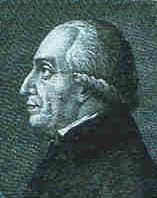
The idea of infusing the blood of animals into humans was first proposed in 1658 by the French monk Dom Robert des Gabets soon after William Harvey’s discovery of the circulation of the blood. Experiments consisting of transfusing blood from one species to another followed. In 1665 in Oxford Richard Lower transfused blood from one dog to another, and so did Jean Baptiste Denys in France. Denys then transfused the blood from three calves into three dogs, and declared that “great advantage will follow from mixing different blood since the blood of animals has fewer impurities than that of men because debauchery and irregularity in eating and drinking are not so common in them as in us.”
From animal experiments Jean Denys (1635- 1704) moved on to human beings. He had studied theology and then medicine in Montpelier and despite humble origins had became physician to Louis XIV. In 1667 he infused, with the help of the experienced surgeon Paul Emmerez, the blood of a sheep into a fifteen-year-old boy who for two months had suffered from a fever, had been treated with leeches, and had lost much blood by being bled twenty times. Denys withdrew three ounces of blood from the boy’s cubital fossa and injected three times the amount of sheep’s blood. The boy suffered no side effects other than a slight nosebleed. Two days later Denys repeated the transfusion using one pound of calf’s blood. This time the boy had an acute hemolytic reaction, with black urine and pain in the lower back, but recovered completely.
Denys then moved on by injecting lamb’s blood into a healthy forty-five-year-old man whom he paid for participating in the experiment. He also treated the Baron Bonde, a young Swedish nobleman whom physicians had rendered unconscious by bleeding him excessively, and who improved after receiving six ounces of calf’s blood but later died. Denys also transfused a paralyzed woman with twelve ounces of lamb’s blood and apparently she recovered almost immediately.
Denys’s last patient was the thirty-four-year-old mentally disturbed Antoine Mauroy, a madman who had been running naked through the streets of Paris and had been bled eighteen times to no avail. Though seeming to recover after receiving four ounces of calf’s blood he soon relapsed. At his wife’s request he was transfused again but died as Denys was drawing blood from his foot. The wife sued Denys but he was found innocent and at the trial it was discovered she had been poisoning her husband with arsenic.
Later Denys developed an anti-hemorrhagic liquid, the composition of which he kept secret but which was so successfully used by the English army that King Charles II offered to appoint him as his physician. Denys refused and returned to Paris, where he died in 1704.
In 1667, the same year as Denys’s first transfusion, Richard Lower and Edmund King transfused the blood of a lamb into a twenty-two-year-old man whom they paid thirty shillings for participating in the experiment. The patient received a second transfusion and said he felt much better.
Other attempts at xenotransfusion followed. In Germany in 1668 Matthaus Purmann claimed to have cured a leper by transfusing him with lamb’s blood, but later reported he could not cure scurvy and “melancholy”, and Georges Merklin (1679) likewise transfused animal blood to humans but emphasized its dangers of and doubted its usefulness. In 1818 the British obstetrician James Blundell emphasized showed the dangers of using animal blood in humans and in 1829 carried out the first human-to-human transfusion on a woman with postpartum hemorrhage.
Yet although the use of animal blood was banned in France, England, and by the Pope, it was not entirely abandoned. In 1876 the physiologist Pierre Cyprien Ore reported on 154 human transfusions with blood from lambs, sheep, and calves, claimed 64 cures, some improvements, but 26 deaths. In 1872 the Italian, Giuseppe Albini carried out two transfusions of sheep blood to a woman. Other transfusions of blood from sheep or calves were also reported by Franz Gesellius from Vilnius (1873), Oscar Hasse in Germany (1874), Henry Gradle in Chicago (1874), and in Germany by Emil Ponfick (1874) and Leonard Landois (1875).
Despite severe adverse effects and several deaths, some surgeons fervently defended the procedure, and it was widely used during the Franco-Prussian war of 1870. It was abandoned after the discovery of blood groups by Karl Landsteiner and the demonstration that blood from animals could cause severe reactions, hemoglobinuria from the destruction of donor red cells by antibodies, heterohemolysins, and heteroagglutinins.
In recent years the increased need for human blood in hospitals has revived the interest in xenotransfusion. Pigs may be the best potential donors, being immunologically the most closely related animals to humans. It has become possible to genetically modify them developing gene-knockout pigs, but further genetic manipulation would be necessary. Many groups of researchers are now reporting their results in transfusing blood from one animal species to another, from cows to goats and calves, cats to dogs, and dogs to cats or foxes. Should the immunological barriers be overcome, larger animals such as cows might be even more suitable because their larger blood vessels would be easier to access and their size would yield larger quantities of blood. This may well become possible in the future, but at present xenotransplantation remains of interest mainly to scientists and to students of medical history.
Further reading
- Sahlins P. The Beast Within: Animals in the First Xenotransplantation. Experiments in France ca. 667-68. 2015;129:25
- Roux FA, Saı P, Deschamps J-Y. Xenotransfusions, past and present. Xenotransplantation 2007; 14: 208.
- Can canine blood be safely given to cats? Veterinary Medicine; North Olmsted 2014;109:60.
- Cooper DKC; Ayares D. Potential benefits and risks of clinical xenotransplantation. Transplant Research and Risk Management; Macclesfield 2012;4:7.
- Weingram T, Hayarock H, Hasharon R. Xenotransfusion of canine blood to cat. Israel J. Vet, Med. 2014;69:50.

Leave a Reply